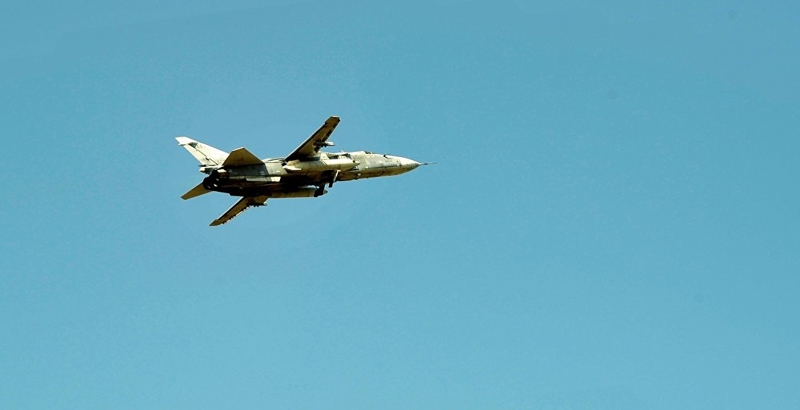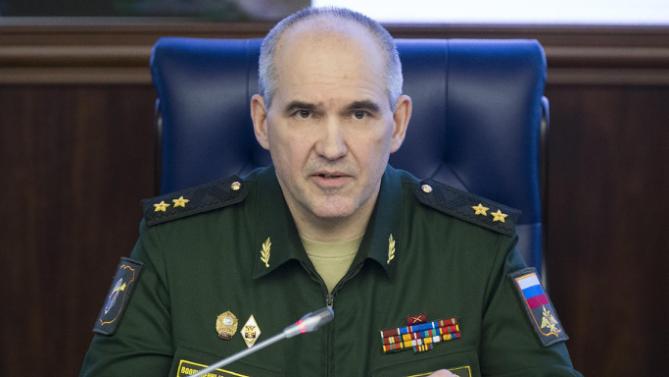“In Palmyra’s suburb at the beginning of March, there were over 4,000 terrorists, no less than 25 tanks and infantry fighting vehicles, over 20 units of standard and rocket artillery, over 40 mortars, about 100 anti-tank guided missiles, more than 50 armored vehicles. In addition, the terrorist had over 100 trucks converted into car bombs and UAVs,” Sergei Rudskoy said.

On Thursday, the General Staff of the Armed Forces of the Russian Federation said that the Russian warplanes directed 500 sorties hitting 2,000 ISIS terrorist targets on March 7-27.
“From March 7-27, Russian Aerospace Forces conducted some 500 sorties around Palmyra, hitting over 2,000 terrorist targets. As a result, strongholds and artillery positions on the strategic heights were destroyed,” Sergei Rudskoy, the Chief of the Main Operations Directorate of the Russian General Staff said.
“In Palmyra’s suburb at the beginning of March, there were over 4,000 terrorists, no less than 25 tanks and infantry fighting vehicles, over 20 units of standard and rocket artillery, over 40 mortars, about 100 anti-tank guided missiles, more than 50 armored vehicles. In addition, the terrorist had over 100 trucks converted into car bombs and UAVs,” Sergei Rudskoy said.
He also said that the liberation of Palmyra will block terrorist supplies between northern and southern regions of Syria. It has strategic importance due its location in the central part of Syria. Roads from Palmyra go to Damascus, Homs, Hama, Aleppo, Raqqa, Deir ez-Zor, as well as to the oil and gas fields in the surrounding areas.
Rudskoy notified that none of Palmyra’s cultural and historic treasures were damaged due to Russian airstrikes against ISIS targets.
“During the entire operation, planes from the Russian Aerospace Forces carried out airstrikes exclusively against known terrorist facilities…I would like to emphasize that none of Palmyra’s cultural treasures were damaged as a result of Russian Aerospace Forces operations,” Rudskoy said.

Lt.-Gen. Sergei Rudskoy of the Russian Military General Staff
A truce agreement was negotiated by Russia and the United States regarding Syrian conflict although many analysts suggested that the Washington had been supporting terrorists fighting against the Syrian government forces.
Nevertheless, the Arab country is currently observing an agreement for the cessation of hostilities which entered into force on February 27. The agreement stipulates the cessation of all military hostilities in Syria, except for the operations against ISIS terrorist group and al-Qaeda-linked al-Nusra Front militants. From the middle of the March, Russia has been partially withdrawing troops and warplanes from Syria to make an end to the Syrian crisis.





